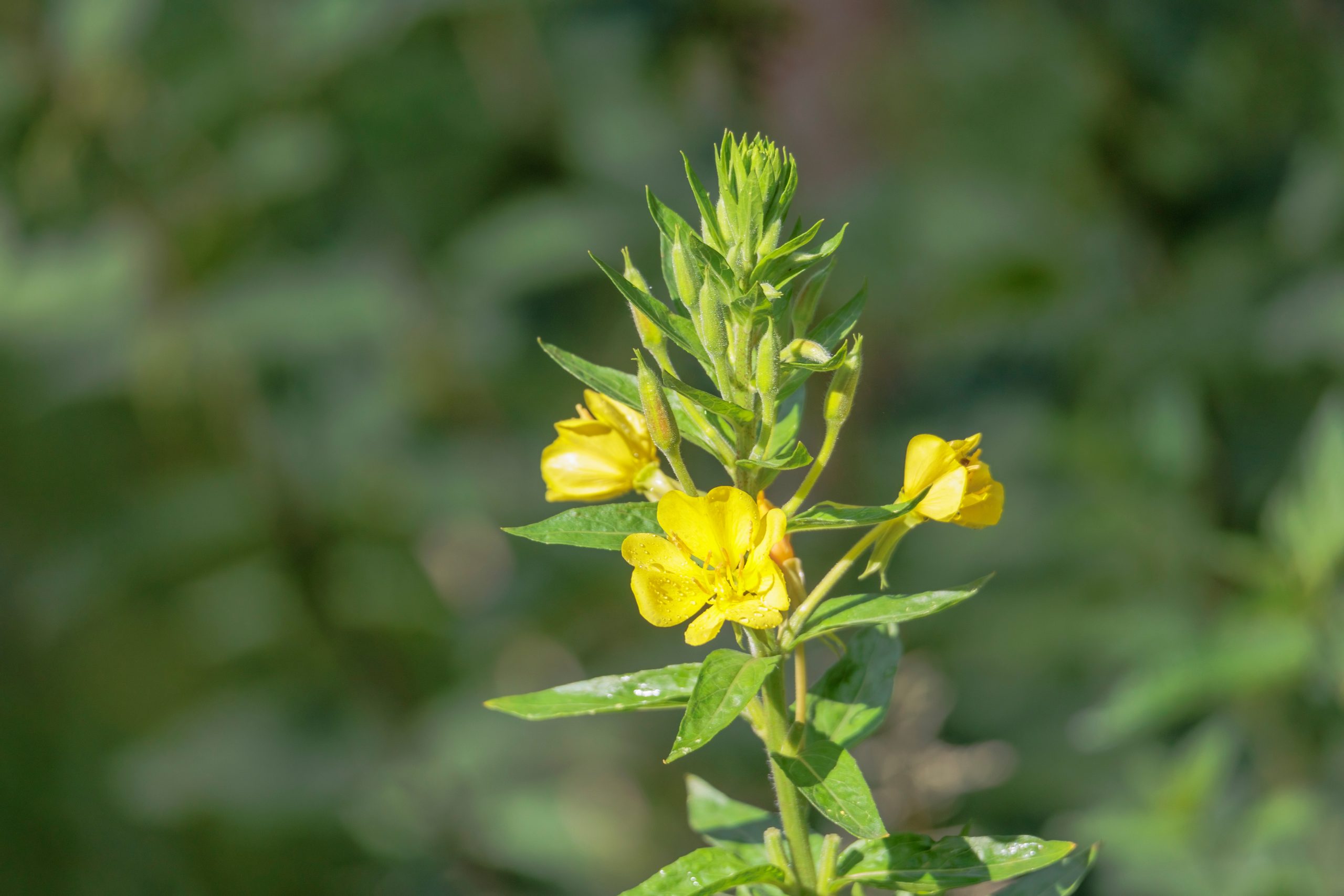Evening Primrose
Evening primrose (Oenothera biennis) is a 2-year-old plant that forms a rosette of leaves close to the ground in the first year, with long, narrow leaves that are slightly toothed at the edges.
Leaves and the hairy stem often have a reddish tinge. In the 2nd year of growth, the stem grows and the large yellow flowers form in the axils of the upper leaves.
The capsule fruits are elongated and develop into a square fruit containing about 200 seeds.
Evening primrose got its name because it opens its fragrant flowers only in the evening. The valuable oil is extracted from the seeds.
Family and collection time
Evening primrose belongs to the evening primrose family.
Parts of the plant used: Fruits
Collection time in detail:
- Fruits: June – October
Healing effect and application
Healing effect:
Herb: anti-inflammatory, antispasmodic
Oil: hormone-regulating, immunomodulating, anti-inflammatory
Application in naturopathy:
Inwardly:
External:
For skin care in infants, neurodermatitis, psoriasis, anal fissures.
Ingredients: (selection)
In the leaves and roots:
-
Mucilage
-
Tannins
-
Phytosterols
-
Resins
-
Sugar
-
Vitamins
-
Minerals
In the seeds:
- Unsaturated fatty acids
- Gamma-linolenic acid
- Linoleic acid
- Greasy oil
References:
Beiser, Rudi: Our edible wild plants. Kosmos Nature Guide 2018
Bühring, Ursel: Praxis-Lehrbuch der modernen Heilpflanzenkunde; Grundlagen – Anwendung – Therapie. Sonntag Publishing House Stuttgart 2005
Pahlow, M. Pharmacist: Medicinal Plants. Bechtermünz Publishing House Augsburg 2001
Schneider, Christine: Finding wild herbs. Ulmer Publishing House Stuttgart 2017
Recipe by Dr. Markus Strauß www.dr-strauss.net

